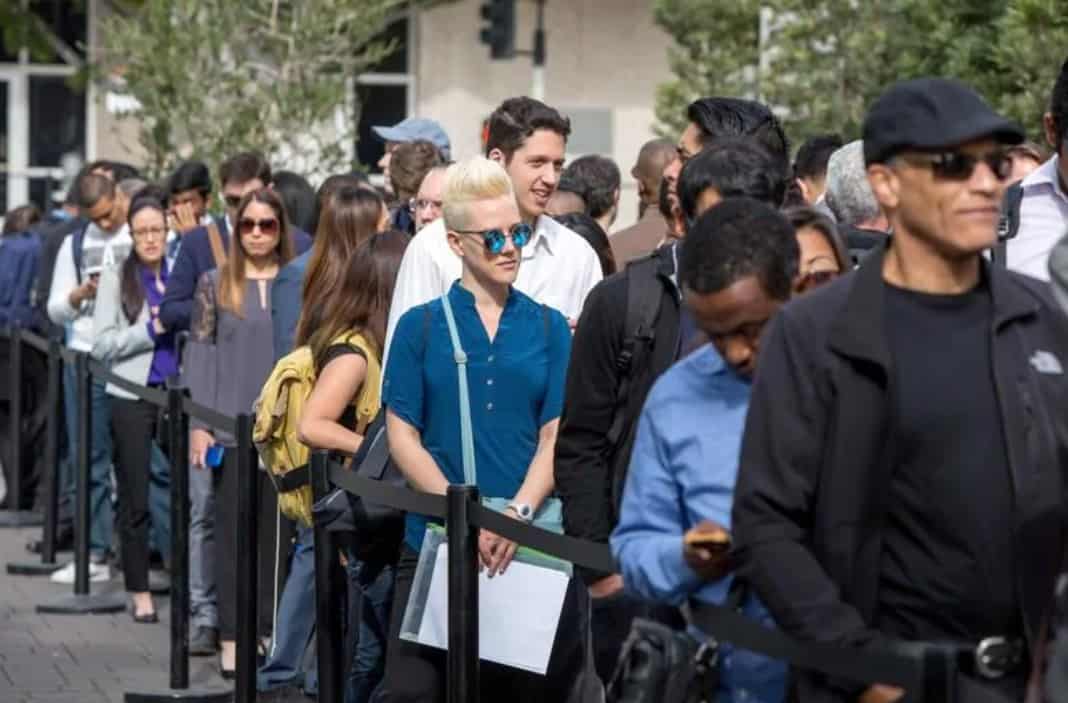U.S. employers likely hired at a stronger rate in September after a disappointing August, with more individuals returning to the workforce as new coronavirus infections slowed and other pressures on the labor market at least temporarily abated.
The Labor Department is set to release its September jobs report Friday morning. Here are the main metrics expected from the report, compared to consensus estimates compiled by Bloomberg:
- Change in non-farm payrolls, September: +500,000 expected, +235,000 in August
- Unemployment rate: 5.1% expected, 5.2% in August
- Average hourly earnings, month-over-month: 0.4% expected, 0.6% in August
- Average hourly earnings, year-over-year: 4.6% expected, 4.3% in August
Non-farm payrolls are expected to pick up from August’s much weaker-than-expected print, when renewed fears over the coronavirus deterred more workers from reentering the labor market.
The September report is also expected to show a ninth consecutive month of net payroll gains in the U.S. economy. But even after months of growth, total employment has yet to return to pre-pandemic levels. The civilian labor force is still down by 2.9 million individuals, compared to February 2020.
“I think we’re going to see another solid report,” ADP Chief Economist Nela Richardson told Yahoo Finance Live. “The main driver, really the hero of the jobs recovery, is going to be the one sector that was the hardest hit. That’s leisure and hospitality.”
Leisure and hospitality employers had added a net zero jobs in August after adding around 400,000 in each of June and July, as the resurgence of the Delta variant weighed on high-contact industries. But the August report was expected to have reflected an only temporary moment of hiring weakness in the service sector, given that coronavirus cases moderated in recent weeks.
In addition to falling new infection rates, a number of other factors may have helped boost hiring in September. Federal enhanced unemployment benefits expired nationally on Sept. 6, or just before the Labor Department’s jobs report survey period during the week of Sept. 12. And many schools and daycares resumed in-person operations, helping alleviate some of the child care burdens that had kept others out of the workforce over the course of the pandemic.
While the early impacts of these developments may show up in September, further improvements are even more likely in the coming months, some economists noted.
“Whatever happened in September, we expect much bigger increases in payrolls over the next few months as Delta fades away, and as labor supply rebounds after the ending of enhanced benefits and the reopening of schools and child care facilities,” Ian Shepherdson, chief economist for Pantheon Macroeconomics, wrote in a note on Thursday.
But even given an expected pick-up in hiring, September’s unemployment rate likely ticked down only modestly, or to 5.1% from 5.2% in August.
“While we do expect a strong pace of hiring, we also anticipate a larger gain in the labor force than we have seen in recent months,” Sam Bullard, Wells Fargo senior economist, wrote in a note earlier this week. “Together, that should slow the descent of the unemployment rate in September following a 0.7-percentage point decline over the past two months.”
And in terms of average hourly earnings, economists are still looking to see a strong print on wage growth, especially on a year-over-year basis. This has come as employers hiked wages and incentives to compete for workers to fill widespread vacancies and meet elevated demand. Average hourly earnings are expected to accelerate on a year-over-year basis for a fifth consecutive month in September and reach their fastest rate since February.
However, September also likely saw more hiring among service-sector workers on the lower end of the wage scale. That’s expected to pull down average hourly earnings on a month-over-month basis, or to 0.4%, compared to 0.6% in August.
‘A reasonably good employment report’
For market participants, the September jobs report will serve as a key indicator for the timing of a monetary policy move by the Federal Reserve.
Fed officials have suggested the economy had already met the central bank’s goals for inflation, and that the only hurdle still left to clear was in the labor market. Last month, Fed Chair Jerome Powell suggested an at least decent September jobs report would be enough to suggest the economy had improved to the point of no longer needing the Fed’s extraordinary monetary policy support.
“It wouldn’t take a knockout, great, super strong employment report,” Federal Reserve Chair Jerome Powell said during his latest post-FOMC meeting press conference in September. “It would take a reasonably good employment report for me to feel like that test is met.”
The Fed has already signaled it expects to begin tapering its crisis-era asset purchase program by year-end, or slowing the pace of purchases of mortgage-backed securities and Treasuries from its current rate of $120 billion per month.
“Based on Chair Powell’s and other FOMC members’ comments at and following the September FOMC meeting, there appears to be a low bar for a tapering announcement in November,” Wells Fargo’s Bullard added. “We suspect the September employment report will clear that bar.”
Heading into Friday’s report, other employment-related indicators also pointed to a firming labor market. ADP’s private payrolls report on Wednesday showed a better-than-expected 568,000 jobs came back in the private sector last month. Both the Institute for Supply Management’s manufacturing and service sector employment indexes held in expansionary territory in September, and weekly unemployment claims dropped to a pandemic-era low at the start of the month.

